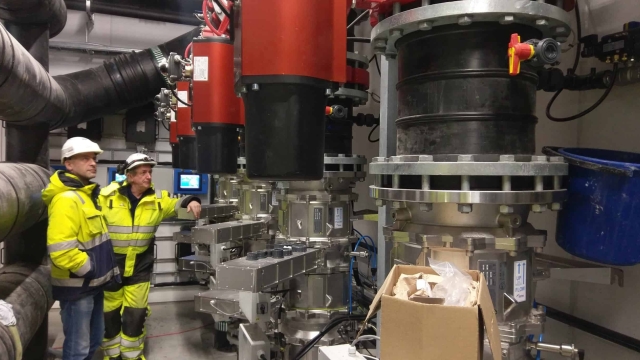Brewing Marvels: Unveiling the Secrets of Brewery Equipment
Welcome to the fascinating world of brewery equipment! Whether you’re a beer enthusiast, an aspiring brewmaster, or simply curious about the process behind your favorite pint, this guide will take you on a journey through the intricate machinery that transforms humble ingredients into liquid gold. From the colossal brewhouse to the intimate fermentation vessels, each piece of brewery equipment plays a crucial role in crafting the perfect brew.
Commercial Brewery Equipment
What exactly is brewery equipment, you may wonder? Well, it encompasses a vast array of tools and machinery designed specifically for the brewing process. These include mash tuns, brew kettles, fermenters, yeast propagation equipment, filtration systems, and so much more. Each piece has its own unique function, working together harmoniously to bring forth exceptional flavors, aromas, and textures in the final product.
In this comprehensive brewery equipment guide, we will delve into the purpose, operation, and significance of each component. You’ll discover the inner workings of brewhouses, where the magic begins with mashing, boiling, and lautering. Additionally, we will uncover the secrets of fermentation vessels, where yeast transforms sugars into alcohol, and explore the essential steps of packaging and filtration.
So, whether you’re dreaming of starting your own microbrewery or simply want to deepen your knowledge of the craft, join us as we unveil the secrets of brewery equipment. Get ready to dive into the world of stainless steel tanks, copper kettles, and countless other tools that make brewing truly marvelous. Let’s raise a glass to the art and science of brewing!
Types of Brewery Equipment
In the fascinating world of brewing, there are several types of equipment that play crucial roles in the production of that perfect pint. Understanding the different brewery equipment is essential for anyone venturing into this craft. Let’s dive into the key types of brewery equipment:
Mashing Equipment: At the heart of every brewery lies the mashing equipment. This key component is responsible for the mashing process where grains are mixed with hot water to extract sugars. Common mashing equipment includes mash tuns, which provide the vessel for the mashing process, and grain mills, designed to crush the grains to the desired consistency.
Fermentation Equipment: After the mashing process, fermentation equipment takes center stage. This equipment ensures that the sugars extracted during mashing are transformed into alcohol by yeast. Fermentation vessels, such as fermenters or conical tanks, provide controlled environments for the yeast to work their magic. Additionally, airlocks and blow-off tubes are utilized to regulate gas release during fermentation.
Distillation Equipment: While not essential for all breweries, distillation equipment is used in the production of spirits like whiskey or rum. These specialized pieces of equipment, such as stills or distillation columns, separate alcohol from the fermented liquid by exploiting differences in boiling points. Distillation equipment is a vital tool for those looking to broaden their brewing horizons and explore the art of spirits.
Understanding the different types of brewery equipment is a crucial first step for anyone embarking on their brewing journey. From mashing to fermentation and even distillation, each type of equipment contributes to the complex and exciting process of bringing delightful brews to life. Stay tuned as we continue to explore the secrets of brewery equipment in our comprehensive guide.
Key Components of Brewery Equipment
Brewery equipment is comprised of various essential components, each playing a crucial role in the brewing process. These components work together harmoniously to create the perfect environment for crafting exceptional beers. Let us delve into the key elements that make up brewery equipment.
Brewhouse: The brewhouse is the heart of any brewery and is responsible for the mashing, lautering, boiling, and whirlpooling processes. It consists of several vessels, including the mash tun, lauter tun, brew kettle, and whirlpool. The brewhouse is where the magic happens, as grains are heated, combined with water, and transformed into sweet wort.

Fermentation Tanks: After the wort is prepared in the brewhouse, it is transferred to fermentation tanks, where the real alchemy occurs. These tanks provide a controlled environment for yeast to work its magic and convert sugars into alcohol, creating the beer we all love. The tanks should be sanitary and airtight to maintain the ideal conditions for fermentation.
Cooling and Filtration Systems: Once the fermentation is complete, the beer requires cooling and filtration. Cooling systems, such as glycol chillers, help regulate the temperature of the beer, ensuring it is suitable for storage and serving. Filtration systems help remove any sediment or impurities, resulting in a clear and visually appealing brew.
Each of these components is integral to the brewing process, working in harmony to create the perfect beer. From the brewhouse where the wort is created, to the fermentation tanks where magic happens, and the cooling and filtration systems that ensure a high-quality end product – brewery equipment is an intricate combination of machinery and craftsmanship. Understanding the key components of brewery equipment is essential for any aspiring brewer or beer enthusiast.
Choosing the Right Brewery Equipment
When it comes to setting up a brewery, choosing the right equipment is crucial for success. The brewery equipment you select will determine the quality and efficiency of your brewing process, so it’s important to make informed decisions. Here are three key factors to consider when selecting brewery equipment:
Capacity: The size of your equipment should match the production capacity you have in mind. It’s essential to assess your target market and forecast demand accurately. Investing in equipment that can handle your projected volume ensures smooth operations without bottlenecks or restrictions.
Functionality: Brewery equipment comes in various types and configurations, each serving specific brewing needs. Consider the specific style of beer you plan to produce and the brewing techniques involved. For example, if you’re focusing on traditional craft beers, you might opt for a brewhouse setup that includes a mash tun, lauter tun, and brew kettle. On the other hand, if you’re experimenting with different flavors and ingredients, additional equipment like fermenters and conditioning tanks may be necessary.
Quality and Durability: Brewing is a demanding process that requires equipment built to withstand frequent use and rigorous cleaning. Look for equipment made from high-quality materials such as stainless steel, which offers durability, corrosion resistance, and ease of maintenance. Investing in well-built, reliable equipment ensures longevity and minimizes downtime due to repairs or replacements.
Choosing the right brewery equipment is a critical step towards building a successful brewery. By considering factors like capacity, functionality, and quality, you’ll be well on your way to brewing marvels with confidence and efficiency.



